Shrimp are one of the most popular aquarium pets, and for good reason. They are fascinating creatures to watch and can add a lot of life to any aquarium.
However, to keep your shrimp healthy and happy, it is important to understand what they eat and how to provide them with the right nutrition.
Shrimp are omnivores, which means they eat both plant and animal matter. In the wild, they feed on algae, plankton, and other small organisms.
In an aquarium, it is important to provide them with a balanced diet that includes both plant and animal-based foods. This can include algae wafers, shrimp pellets, frozen or live foods, and fresh vegetables.
Contents
Key Takeaways on What Do Shrimp Eat in an Aquarium?
- Shrimp are omnivores and require a balanced diet of both plant and animal-based foods.
- Providing a variety of food sources is important for their overall health and wellbeing.
- Fresh vegetables and algae wafers are important sources of nutrition for shrimp in an aquarium.
Check out these other feeding tips for your aquarium pets:
Understanding Shrimp in Aquariums
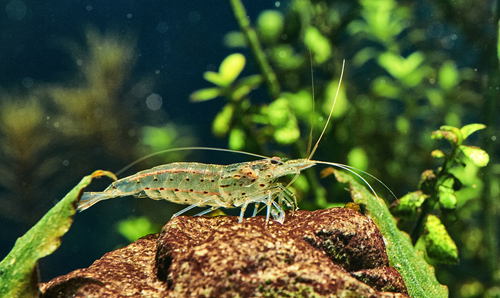
Shrimp are a popular choice for aquarium enthusiasts due to their fascinating nature and unique appearance. They come in a variety of species and sizes, making them a versatile addition to any aquarium.
Understanding their behavior and dietary needs is essential to ensure they thrive in captivity.
In nature, shrimp are omnivores, meaning they consume both plant and animal matter. In an aquarium setting, they require a balanced diet to maintain their health. Their diet should consist of a variety of foods, including algae, vegetables, and protein-rich foods.
Freshwater shrimp, such as Cherry Shrimp and Amano Shrimp, are commonly kept in aquariums. They are generally easy to care for and can be fed a variety of foods, including algae wafers, blanched vegetables, and shrimp pellets.
Saltwater shrimp, such as Cleaner Shrimp and Peppermint Shrimp, are also popular in aquariums. They require a more specialized diet, including live or frozen foods such as brine shrimp, mysis shrimp, and krill.
It is important to note that different species of shrimp have different dietary needs. Some may require more protein-rich foods, while others may prefer a more plant-based diet.
Researching the specific needs of the species you plan to keep is crucial to their well-being.
In captivity, shrimp are often housed in aquariums with other animals. It is important to ensure that their tank mates are compatible and do not pose a threat to the shrimp. Some fish, for example, may view shrimp as a food source and may attack them.
Shrimp Diet Overview
Shrimp are omnivorous creatures that require a balanced diet to maintain optimal health and growth in an aquarium. In the wild, shrimp feed on a variety of plant and animal matter, including algae, detritus, and small aquatic organisms.
In an aquarium setting, it is important to provide shrimp with a diverse diet that includes both plant and animal-based protein sources. A balanced diet will help ensure that the shrimp receive all the necessary nutrients, vitamins, and minerals needed for growth and reproduction.
Protein is an essential component of a shrimp’s diet, and animal-based protein sources are particularly important for promoting growth and reproduction. Some common animal-based protein sources for shrimp include brine shrimp, bloodworms, and krill.
In addition to animal protein, shrimp also require plant-based protein sources such as spirulina, algae, and vegetable matter. These plant-based sources provide essential nutrients and fiber that are important for maintaining a healthy digestive system.
It is important to note that overfeeding can lead to poor water quality and health issues for the shrimp. It is recommended to feed small amounts of food multiple times a day rather than one large feeding to prevent overfeeding.
Common Food Sources in Aquarium
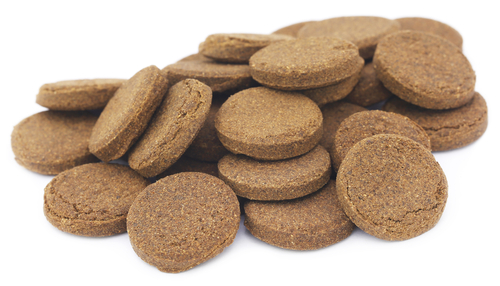
Shrimp are omnivorous creatures, which means they eat both plants and animals. In the wild, shrimp feed on a variety of food sources, including algae, detritus, and small fish.
In an aquarium setting, it is essential to provide them with a balanced diet that includes a variety of food sources to ensure their optimal health and growth.
Here are some common food sources for shrimp in an aquarium:
- Pellets: Pellets are a popular food source for shrimp as they are easy to feed and provide a balanced diet. Pellets come in different sizes and types, and it is essential to choose the right size for your shrimp species.
- Flakes: Flakes are another popular food source for shrimp. They are easy to feed and provide a balanced diet. However, flakes can quickly disintegrate in water, making it difficult for shrimp to eat them.
- Frozen Foods: Frozen foods, such as brine shrimp, bloodworms, and daphnia, are a popular food source for shrimp. They provide a variety of nutrients and are easy to store and feed.
- Live Food: Live food, such as brine shrimp, daphnia, and mosquito larvae, are a popular food source for shrimp. They provide a variety of nutrients and are easy to feed.
- Vegetables: Vegetables, such as broccoli, sweet potato, and zucchini, are a great source of nutrients for shrimp. They can be blanched and fed to shrimp.
- Algae and Plants: Algae and plants, such as moss, Java fern, and Anubias, are a natural food source for shrimp. They provide essential nutrients and help maintain water quality.
- Organic Matter: Organic matter, such as decaying plant matter and rocks, can provide a natural food source for shrimp. However, it is essential to ensure that the organic matter is safe and free from harmful chemicals.
Specific Shrimp Species and Their Diets
Different species of shrimp have different dietary requirements. Here is a breakdown of some popular shrimp species and their diets:
1. Amano Shrimp

Amano shrimp are known to be omnivores, meaning they eat both plant and animal matter. They are known to eat algae, biofilm, and leftover fish food. Amano shrimp also eat decaying plant matter and detritus.
2. Cleaner Shrimp
Cleaner shrimp are known to be carnivorous, meaning they eat meat. They are known to eat parasites, dead skin, and other debris from the bodies of larger fish. In an aquarium, they can be fed with small pieces of fish, shrimp, or other meaty foods.
3. Vampire Shrimp
Vampire shrimp are known to be omnivores, meaning they eat both plant and animal matter. They are known to eat algae, biofilm, and leftover fish food. Vampire shrimp also eat decaying plant matter and detritus.
4. Cherry Shrimp
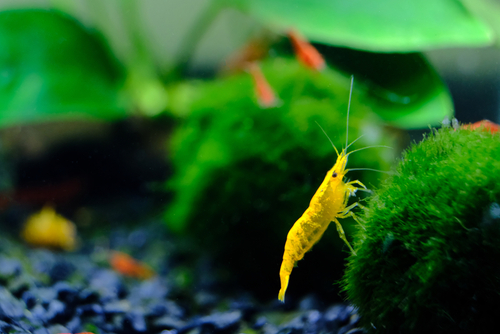
Cherry shrimp are known to be omnivores, meaning they eat both plant and animal matter. They are known to eat algae, biofilm, and leftover fish food. Cherry shrimp also eat decaying plant matter and detritus.
5. Ghost Shrimp
Ghost shrimp are known to be omnivores, meaning they eat both plant and animal matter. They are known to eat algae, biofilm, and leftover fish food. Ghost shrimp also eat decaying plant matter and detritus.
6. Bamboo Shrimp
Bamboo shrimp are known to be filter feeders, meaning they eat small particles suspended in the water.
They are known to eat algae, biofilm, and other small particles. In an aquarium, they can be fed with small pieces of fish, shrimp, or other meaty foods.
7. Pacific Cleaner Shrimp
Pacific cleaner shrimp are known to be carnivorous, meaning they eat meat. They are known to eat parasites, dead skin, and other debris from the bodies of larger fish.
In an aquarium, they can be fed with small pieces of fish, shrimp, or other meaty foods.
8. Red Cherry Shrimp
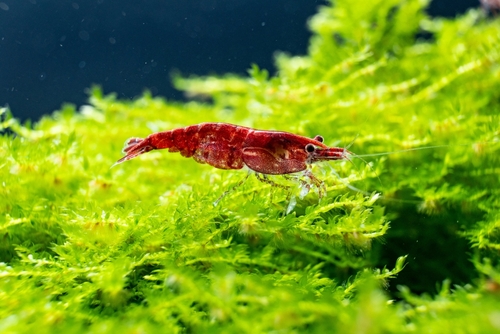
Red cherry shrimp are known to be omnivores, meaning they eat both plant and animal matter. They are known to eat algae, biofilm, and leftover fish food. Red cherry shrimp also eat decaying plant matter and detritus.
9. Saltwater Cleaner Shrimp
Saltwater cleaner shrimp are known to be carnivorous, meaning they eat meat. They are known to eat parasites, dead skin, and other debris from the bodies of larger fish.
In an aquarium, they can be fed with small pieces of fish, shrimp, or other meaty foods.
10. Bee Shrimp
Bee shrimp are known to be omnivores, meaning they eat both plant and animal matter. They are known to eat algae, biofilm, and leftover fish food. Bee shrimp also eat decaying plant matter and detritus.
Feeding Habits of Shrimp
Shrimp are fascinating creatures that can be kept in aquariums as pets. They have unique feeding habits that make them interesting to observe.
Shrimp are omnivores, meaning they eat both plant and animal matter. Their feeding habits can be categorized into scavenging, grazing, and filter feeding.
Scavenging
Shrimp are natural scavengers and will eat anything they can find on the aquarium floor. They are particularly fond of dead plant matter and algae.
Shrimp also eat leftover food that other aquarium inhabitants may have missed. It is important to note that shrimp will not eat anything that is too big for them to handle.
Grazing
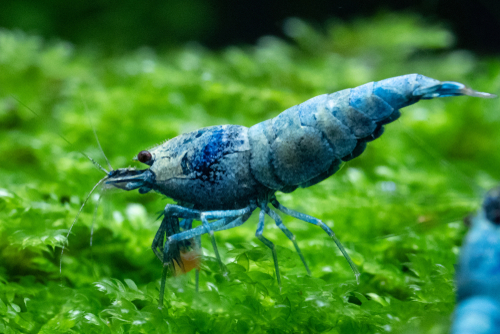
Shrimp are also grazers and will feed on live plants in the aquarium. They use their front claws to pick at the plants and eat the small particles that come off. It is important to provide live plants for shrimp to graze on, as it is a natural part of their diet.
Filter Feeding
Some species of shrimp are filter feeders. They use their front legs to create a current that brings in small particles of food. The particles are then filtered through the shrimp’s gills and into their mouth. This type of feeding is common in freshwater shrimp, such as the cherry shrimp.
Role of Shrimp in Aquarium Ecosystem
Shrimp play a vital role in the aquarium ecosystem. They are scavengers and help keep the tank clean by consuming various types of organic matter. Shrimp feed on a variety of food sources, including algae, dead plants, decomposing matter, and detritus.
In the wild, shrimp are an essential part of the food chain. They are preyed upon by larger fish and other aquatic animals.
In an aquarium, shrimp can help maintain a healthy ecosystem by consuming dead fish, dead shrimp, and other organic matter that could otherwise pollute the water.
Shrimp also molt, shedding their exoskeletons as they grow. The molted exoskeletons provide a valuable source of calcium for other aquatic animals, such as snails and crabs. Additionally, shrimp exoskeletons can help regulate the pH level of the water by acting as a buffer.
It is important to note that shrimp can also be hosts to parasites, which can harm other aquatic animals in the tank. Therefore, it is essential to monitor the shrimp for signs of infection and treat them promptly if necessary.
Additional Nutritional Needs
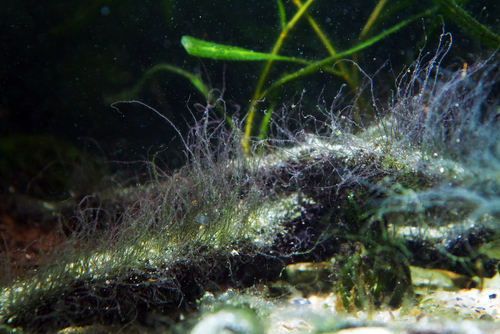
In addition to their primary diet, shrimp in an aquarium may require additional sources of nutrition to maintain their health and vitality.
One important source of nutrition is biofilm, which is a thin layer of microorganisms that grow on surfaces in the aquarium. Shrimp will graze on biofilm to supplement their diet with essential minerals and vitamins.
Daphnia and brine shrimp are also excellent sources of nutrition for shrimp. These small aquatic organisms are rich in protein and provide a nutritious supplement to a shrimp’s diet.
Calcium is another essential nutrient for shrimp, as it is necessary for the development and maintenance of their exoskeletons. Calcium can be provided in the form of calcium-rich foods or supplements.
Meat is another valuable source of nutrition for shrimp. While they typically prefer plant-based foods, they will also consume small amounts of meat if it is available.
Vitamins are also important for shrimp, as they help to support their immune system and overall health. Vitamin supplements can be added to the aquarium water or provided in the form of vitamin-rich foods.
Infusoria is a type of microorganism that can be cultured in the aquarium to provide a nutritious food source for shrimp. This is particularly important for young shrimp and larvae, as they require a high-protein diet to support their growth and development.
Preparation and Feeding Tips
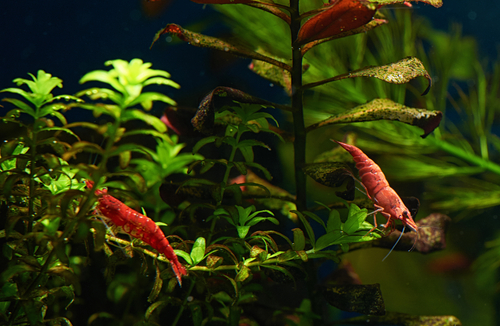
When it comes to feeding shrimp in an aquarium, it is important to provide a balanced and nutritious diet to ensure their health and well-being. Here are some preparation and feeding tips to keep in mind:
- Variety is key: Shrimp are omnivores and require a varied diet to thrive. Offer a mix of protein-rich foods such as bloodworms and algae wafers, as well as plant-based options like spinach and zucchini.
- Consider bacterial growth: Shrimp also feed on bacteria and other microorganisms that grow naturally in the aquarium. Leave some leaf litter and driftwood in the tank to encourage the growth of beneficial bacteria.
- Add Indian almond leaves: Indian almond leaves are known to have antibacterial and antifungal properties, and can also provide a source of tannins which can help simulate the natural environment of the shrimp.
- Boil water before adding food: To prevent the introduction of harmful bacteria or parasites, it is recommended to boil any food or supplements before adding them to the tank.
Common Mistakes to Avoid When Feeding Shrimp
Inconsistent Feeding Schedule
An inconsistent feeding schedule is more than just a minor oversight; it can lead to a cascade of problems for your shrimp. These creatures thrive on routine, and irregular feeding times can stress them out, weakening their immune systems and even impacting their molting and breeding cycles.

Furthermore, food left unconsumed due to an erratic feeding schedule can degrade water quality, as it decays and fosters bacterial growth—while shrimp do eat bacteria, an imbalance can be detrimental.
For a thriving shrimp community, it’s essential to stick to a consistent feeding schedule, which not only keeps them healthy but also maintains the balance of their tank environment.
Nutritional Gaps
It’s not just about throwing some food into the tank and calling it a day. Shrimp require a range of nutrients. While they do enjoy munching on bacteria, detritus, and tiny food particles that might be available in a standard fish tank, they’ll need more than that to truly flourish. Specially-formulated shrimp pellets can provide additional nutrients they might be missing.
Ignoring Signs of Illness:
If you notice your shrimp are not eating well or seem sluggish, it may be a sign of illness or that they are not being fed a suitable diet. In such cases, a review of their nutritional intake and potentially a visit to a veterinarian specializing in aquatic animals may be necessary.
Frequently Asked Questions
What is the best food for freshwater shrimp?
Freshwater shrimp are omnivores, so they can eat a variety of foods. The best food for them is a high-quality shrimp pellet or flake food that contains all the necessary nutrients.
They also enjoy vegetables such as spinach, zucchini, and cucumber, as well as protein-rich foods like brine shrimp and bloodworms.
How often should I feed my aquarium shrimp?
It is recommended to feed your aquarium shrimp once or twice a day, in small amounts. Overfeeding can lead to poor water quality and health problems for your shrimp.
Do shrimp eat algae in an aquarium?
Yes, shrimp can eat algae in an aquarium. However, they will not eat all types of algae, and it should not be the only food source for your shrimp.
What are some plants that aquarium shrimp can eat?
Aquarium shrimp can eat a variety of plants, including Java moss, Java fern, and Anubias. These plants are also great for providing hiding places and breeding grounds for your shrimp.
Do shrimp lay eggs or give birth in an aquarium?
Shrimp lay eggs in an aquarium, and the eggs hatch into larvae. The larvae will then go through several stages of development before becoming fully grown shrimp.
Can aquarium shrimp help clean my fish tank?
Yes, aquarium shrimp can help clean your fish tank by eating algae and leftover food. However, they cannot replace regular water changes and tank maintenance.
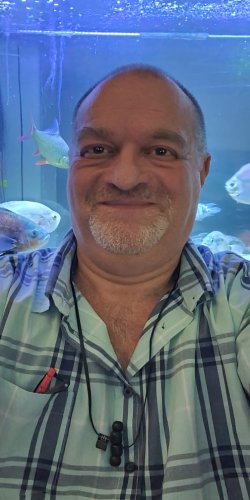
Veteran fish keeper and keen hobbyist with a serious case of MTS. My midlife crisis was the establishment of a fish room, much to my wife’s horror. Little does she know it could be worse!!


